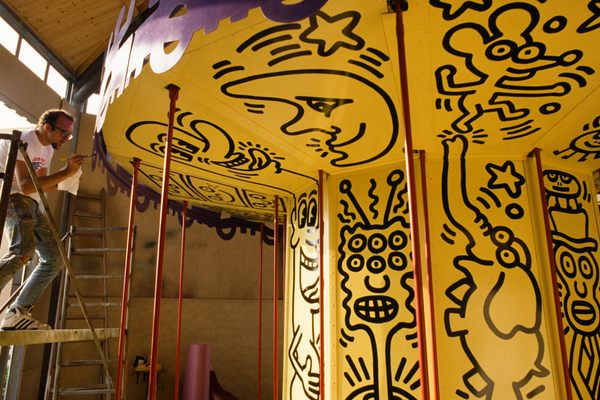Destruction on the Horizon for the Eiffel Tower of Moscow
Shukhov Tower in Mosco (photograph by Ivtorov/Wikimedia)
It’s been compared to the Eiffel Tower and is celebrated by architects around the world, but after a century of looming over Moscow the Shukhov Tower may be destroyed.
Built from 1920 to 1922 after a design by Vladimir Shukhov, the 525-foot radio tower was commissioned by Lenin to broadcast into distant Soviet territories. Also known as the Shabolovka Tower, it was originally meant to be much taller — 1,150 feet — and was curtailed by a steel shortage due to the Civil War. Now it may be dismantled because of structural concerns, a proposal given approval by the Russian State Committee for Television and Radio Broadcasting this February.
Inside the Shukhov Radio Tower (photograph by Arssenev/Wikimedia)
Architects and Moscow citizens aren’t ready to let the lattice tower go, with thousands of locals and numerous architects such as Rem Koolhaas, Norman Foster, and Elizabeth Diller expressing their dismay at its demise. They argue that it should be preserved as the architectural and engineering achievement that it is.
Photographer Richard Pare, co-author of the open letter to President Putin, told the BBC: ”It is a transcendent structure. The sensation of standing underneath it is so uplifting, it makes you feel weightless. It soars upwards.”
View from inside the Shukhov Tower (photograph by Maxim Fedorov)
The preservation letter proclaims, according to the Guardian, that the tower “is one of the emblems of Moscow, and one of the superlative engineering feats of the 20th century, still influencing and enriching technical and architectural ideas globally.” What makes the elegant old tower so special is the man behind it. Vladimir Shukhov was incredibly inventive with his designs that incorporated innovative mathematics as well as the early modernist Constructivist movement.
The Shukhov Tower takes a hyperboloid shape — such as you might find at the Sagrada Família or a nuclear plant cooling tower — and incorporates a diagrid so it can be very tall while surviving the wind. Shukhov first experimented with hyperboloids through a tower in Polibino in 1896. By the time he was working on the tower in Moscow he had refined the ideas into such a deft combination of material and form he likely could have succeeded if it had made it to its planned height.
However, due to the nature of his towers which were designed for radios and electricity, many became obsolete, such as one pylon that sits rusting on the Oka River. Constructivism and Shukhov’s style of building ended with Stalin, who preferred a sterner, anti-experimental architecture. Some have proposed relocating the Shukhov Tower and claiming the space for some new construction that might soar as high. Yet that would not have the same lofty elegance or influential history in its form, which stands as a reminder of early 20th century optimism for a Soviet future that never arrived.
The Shukhov Tower in Moscow (photograph by Ivtorov/Wikimedia)







Follow us on Twitter to get the latest on the world's hidden wonders.
Like us on Facebook to get the latest on the world's hidden wonders.
Follow us on Twitter Like us on Facebook